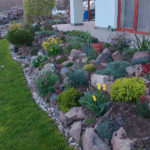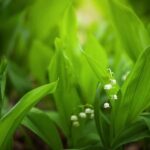Are you looking to create a beautiful and functional edible garden design layout? Planning the layout of your edible garden is crucial for maximizing yield and creating an aesthetically pleasing space. In this article, we will explore the benefits of having an edible garden, choosing the right location, selecting the right plants, designing a layout, maintaining your garden, and ultimately enjoying the fruits of your labor.
When it comes to creating an edible garden, the design layout is essential for optimizing space and ensuring that your plants thrive. Whether you have limited space or a large area to work with, designing an efficient and visually appealing layout will be key to your success.
In addition to providing fresh produce, herbs, and fruits for your kitchen, an edible garden can also bring numerous benefits to your life. From promoting sustainable living to improving mental well-being through gardening activities, there are many reasons why having an edible garden is a valuable investment in both time and resources. So let’s dive into the world of edible gardens and explore all that it has to offer.
Benefits of Having an Edible Garden
When it comes to gardening, many people opt for flower gardens or decorative landscaping. However, there are numerous benefits to having an edible garden that make it a worthwhile endeavor. From promoting sustainability to providing access to fresh, organic produce, the advantages of growing your own fruits and vegetables are plentiful.
Health Benefits
One of the most significant benefits of having an edible garden is the impact it can have on your health. By growing your own fruits and vegetables, you have control over the use of pesticides and other chemicals. This means that you can enjoy fresh, organic produce right from your backyard, free from harmful substances that are often found in store-bought options.
Environmental Benefits
In addition to the health benefits, having an edible garden also contributes positively to the environment. Growing your own food reduces the need for transportation and packaging, which results in a decrease in carbon emissions. Furthermore, by utilizing sustainable gardening practices such as composting and water conservation, you can minimize your ecological footprint even further.
Budgetary Benefits
Another advantage of having an edible garden is the potential savings it can bring. By producing your own fruits and vegetables, you can significantly reduce your grocery bills while also ensuring a constant supply of fresh produce at no extra cost. Additionally, any excess produce can be preserved through canning or freezing for future use, further extending the financial benefits of maintaining an edible garden.
Choosing the Right Location for Your Edible Garden
When it comes to choosing the right location for your edible garden, there are several factors to consider in order to ensure a successful and thriving garden. Here are some important points to keep in mind:
- Sunlight: One of the most crucial factors for the success of an edible garden is sunlight. Most edible plants require at least 6-8 hours of direct sunlight per day. When choosing the location for your garden, make sure it is in an area that receives adequate sunlight throughout the day.
- Soil quality: The quality of the soil is another important consideration when selecting a location for your edible garden. It’s essential to choose a spot with well-draining soil that is rich in organic matter. Conduct a soil test to determine its pH level and nutrient content, and amend the soil as needed to create an optimal growing environment for your plants.
- Accessibility: Another factor to consider is the accessibility of the chosen location. Make sure it’s easily accessible for watering, weeding, harvesting, and overall maintenance. This will make it more convenient for you to care for your edible garden on a regular basis.
In addition to these considerations, take into account any potential obstructions such as trees or buildings that could shade or block sunlight, as well as any existing structures or landscaping features that may impact the layout and design of your garden. By carefully evaluating these factors, you can choose the right location for your edible garden and set it up for success.
Types of Edible Plants for Your Garden
When planning an edible garden, it is essential to consider the types of plants you want to include in your garden. By incorporating a variety of edible plants, you can create a garden that not only provides fresh produce for your meals but also adds beauty and diversity to your outdoor space. Here are some popular types of edible plants to consider for your garden:
- Vegetables: Including vegetables in your garden is a great way to have a fresh supply of nutritious produce at hand. Popular options for vegetable plants include tomatoes, peppers, cucumbers, lettuce, spinach, and carrots.
- Fruit Trees: Fruit-bearing trees are an excellent addition to any edible garden. Consider planting apple trees, pear trees, peach trees, or citrus trees such as lemon or orange.
- Herbs: Herbs are versatile and can be used in various culinary dishes. Planting herbs like basil, mint, rosemary, thyme, and cilantro will add flavor and fragrance to your garden.
- Berries: Berries such as strawberries, blueberries, raspberries, and blackberries are easy to grow and provide delicious fruits for snacking or baking.
Incorporating a mix of these different types of edible plants into your garden will not only provide you with a diverse range of fresh produce but also create a visually appealing and functional outdoor space. Before starting your garden layout design, it’s important to research the specific requirements of each plant type in terms of sunlight exposure, soil conditions, and space needed for optimal growth.
When selecting plants for your edible garden layout, consider the climate and growing conditions in your area. Certain plants may thrive better in specific environments while others may require extra care or maintenance.
It’s also helpful to choose varieties that are well-suited for home gardening and have a good track record of success among other gardeners. By carefully considering the types of edible plants that will thrive in your location and meet your culinary preferences, you can design an abundant and diverse edible garden.
Designing Your Edible Garden Layout
When it comes to designing your edible garden layout, there are several key factors to consider in order to optimize the space and ensure a bountiful harvest. One of the first things to take into account is the size of your garden and the types of plants you want to grow. It’s important to plan out the layout carefully, taking into consideration factors such as sunlight, spacing between plants, and accessibility for watering and harvesting.
Another important aspect of designing your edible garden layout is determining the best planting techniques for your chosen plants. For example, some plants may thrive when planted in rows, while others may do better in raised beds or container gardens. Understanding the specific needs of each type of plant will help you create an efficient and productive layout for your garden.
In addition to selecting the right location for your edible garden (as discussed in a previous section), it’s also essential to consider companion planting when designing your garden layout. Certain plants can benefit from being planted near one another, either by deterring pests or enhancing growth. This approach not only maximizes space but also promotes a healthy ecosystem within your garden.
| Key Factors | Considerations |
|---|---|
| Size of Garden | Optimizing space and planning layout |
| Planting Techniques | Determining best approach for different plants |
| Companion Planting | Promoting healthy ecosystems within the garden |
Tips for Maintaining Your Edible Garden
Maintaining an edible garden is essential in ensuring the health and productivity of your plants. Proper care and attention will help you enjoy a bountiful harvest. Here are some tips for maintaining your edible garden:
Regular Watering
Water is crucial for the growth of plants, especially in an edible garden. Make sure to water your plants regularly, especially during dry spells or hot weather. It’s important to water the roots directly to ensure that the plants receive an adequate amount of moisture.
Weeding and Pest Control
Regular weeding is necessary to prevent unwanted plants from competing with your edibles for nutrients and space. In addition, keeping an eye out for pests and diseases is crucial. Look for natural ways to control pests, such as introducing beneficial insects or using organic pest control methods to minimize harm to your edibles.
Pruning and Trimming
Proper pruning and trimming are important aspects of maintaining the health of your edible garden. Regularly trim overgrown branches and prune excessive growth to encourage healthy development and better fruit production.
By following these tips for maintaining your edible garden, you can ensure that your plants thrive and provide you with a successful harvest throughout the growing season. Remember that regular maintenance is key to reaping the benefits of a productive and flourishing edible garden.
Harvesting and Enjoying the Fruits of Your Labor
Once your edible garden is flourishing, it will be time to enjoy the fruits (and vegetables) of your labor. Harvesting your homegrown produce is not only rewarding but also ensures that you’re enjoying the freshest and most flavorful ingredients possible in your meals.
When it comes to harvesting, timing is crucial. Different plants have different peak times for harvesting, so it’s important to research each type of plant in your garden to know when they are at their best for picking. For example, tomatoes should be harvested when they are fully colored and firm, while herbs like basil should be picked before they start flowering for the best flavor.
After harvesting, it’s important to store your fruits and vegetables properly to maintain their freshness. Some produce like root vegetables can be stored in a cool dark place such as a cellar or refrigerator, while others like berries are best kept in the refrigerator with good air circulation. Additionally, some fruits and vegetables can also be preserved through canning or freezing for future use.
Finally, once you’ve harvested and stored your delicious bounty, it’s time to enjoy all of the hard work you’ve put into your garden. Whether you’re cooking up a fresh meal using ingredients from your garden or sharing them with friends and family, there’s nothing quite like savoring the taste of homegrown produce.
| Harvesting Tips | Storage Tips |
|---|---|
| Research peak harvesting times for each plant | Store root vegetables in a cool dark place |
| Handle produce carefully to avoid damage | Keep berries refrigerated with good air flow |
| Preserve excess produce through canning or freezing | Avoid storing fruits and vegetables together as they release gases that may cause ripening too quickly |
Inspiration for Your Edible Garden Design Layout
Real-Life Examples and Success Stories:
One of the best ways to get inspiration for your edible garden design layout is by looking at real-life examples and success stories from other gardeners. Seeing how others have designed and maintained their own edible gardens can provide you with valuable insights and ideas for your own gardening endeavors.
For example, you may come across a neighbor who has successfully integrated raised beds for growing vegetables in their backyard, or a friend who has beautifully incorporated fruit-bearing trees into their landscape. These real-life examples can show you how to make the most of your available space and create a stunning and productive edible garden.
Additionally, success stories from experienced gardeners can offer valuable tips and tricks for maintaining an edible garden. You can learn about different planting techniques, companion planting strategies, pest control methods, and more. Hearing about the successes of others can inspire you to try new approaches in your own garden and help you avoid common pitfalls along the way.
By seeking out real-life examples and success stories, you’ll be able to gather a wealth of practical knowledge and creative ideas that will guide you in designing a beautiful and fruitful edible garden on your own property. Whether it’s through personal connections or online communities, there are countless opportunities to learn from the experiences of others and find inspiration for your own gardening journey.
Conclusion
In conclusion, creating an edible garden design layout allows you to not only enjoy the beauty of your outdoor space but also reap the benefits of growing your own food. By taking advantage of the available resources and carefully planning the layout of your garden, you can create a space that is both aesthetically pleasing and functional. The satisfaction of tending to your plants and harvesting fresh produce is a rewarding experience that everyone should consider embracing.
Furthermore, through the process of designing and maintaining an edible garden, you have the opportunity to connect with nature and gain a deeper appreciation for the environment. It provides a sense of self-sufficiency and sustainability as you reduce your reliance on store-bought produce. Additionally, incorporating different types of edible plants in your garden not only adds variety to your meals but also supports biodiversity by providing a habitat for local wildlife.
Ultimately, by exploring different real-life examples and success stories in edible garden design layout, individuals can find inspiration to start their own projects or improve existing ones. Whether it’s a small balcony garden or a sprawling backyard plot, there are countless ways to incorporate edible plants into your outdoor space.
Embracing the beauty and functionality of an edible garden design layout has numerous benefits for both individuals and the environment, making it a worthwhile endeavor for any gardening enthusiast.
Frequently Asked Questions
How Do You Plan an Edible Garden?
Planning an edible garden involves first considering the space available and the climate in which the garden will be located. It’s important to choose a variety of fruits, vegetables, and herbs that will thrive in the specific conditions.
Next, creating a layout for the garden that takes into account sunlight, water accessibility, and potential pests is crucial. Proper spacing between plants is also essential to ensure they have enough room to grow and receive adequate nutrients.
How to Do Edible Landscaping?
Edible landscaping involves incorporating edible plants into traditional ornamental landscapes to create both functional and visually appealing gardens. This can include using fruit trees as shade trees, planting herbs alongside flowers, or even replacing traditional shrubs with berry bushes.
When designing an edible landscape, it’s important to consider the aesthetic appeal of the plants as well as their practical use for cooking or snacking.
What Is the Best Layout for Garden Plants?
The best layout for garden plants often depends on the specific needs of different types of plants and how much space is available. Some general principles include planting taller crops like corn or tomatoes on the north side to avoid shading smaller plants, alternating rows of different crops to prevent pests from spreading easily, and using companion planting techniques to naturally deter pests or enhance flavor.
Additionally, utilizing raised beds or container gardening can help optimize space and separate different plant varieties more effectively.

Welcome to my gardening blog! I am passionate about plants and enjoy sharing my knowledge and experiences with others. In this blog, I will write about everything related to gardening, from tips on how to get started to updates on my own garden projects.





